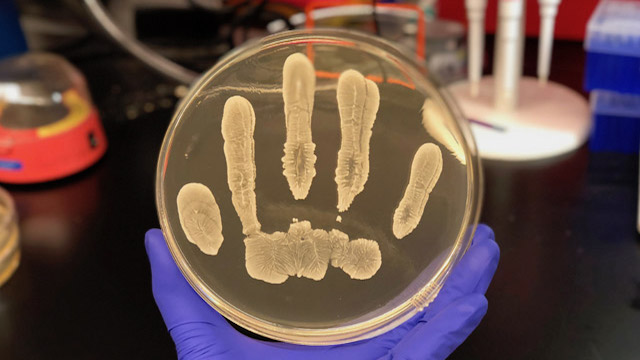Escherichia coli is capable of synthesizing drug-resistant proteins even in the presence of antibiotics designed to cripple cell growth. That’s the finding by a group of French researchers reporting today (May 23) in Science. They also discovered how the bacteria manage this feat: a well-conserved membrane pump shuttles antibiotics out of the cell—just long enough to buy the cells time to receive DNA from neighbor cells that codes for a drug-resistant protein.
“This is a key discovery,” microbiologist Manuel Varela of Eastern New Mexico University who wasn’t involved in the study says to The Scientist in an email. “This finding will help explain how bacteria manage to spread antimicrobial resistance as they encounter toxic levels of antibiotic.”
The discovery was a surprise to Christian Lesterlin, a bacterial geneticist at the University of Lyon and the senior author of the study. He and his colleagues had initially started the project to develop a real-time microscopy system to observe in detail plasmid transfer—a process by which bacterial cells share DNA with one another. Using carefully designed fluorescent proteins, they could track plasmids shuttling DNA from donor cells to recipient microbes as well as the resulting proteins once they had been translated inside the new hosts.
Using E. coli’s habitual sharing of antibiotic resistance genes as a case study, they watched as bacteria passed around DNA encoding the TetA protein—a pump that makes cells resistant to tetracycline by shunting it out of the cell. Shortly after, they observed plasmid DNA arriving in non-resistant cells, and some time later, red fluorescent spots appearing in the membranes of recipient cells, indicating the TetA protein was translated and the cells proved resistant to tetracycline.
The antibiotic, which is commonly used in livestock, but sometimes also to treat people for pneumonia, respiratory tract infections, and other conditions, ordinarily stunts the growth of bacteria that don’t have TetA, but numerous bacteria strains are becoming resistant through the adoption of such mechanisms. Tetracycline wasn’t present for this initial experiment, so to see how this process is influenced by the drug itself, the researchers exposed the cells to high concentrations of tetracycline and once again put them under the microscope.
As expected, they observed plasmid DNA arriving in new, non-resistant cells. This was expected, because tetracycline does nothing to hinder that process. Instead, it’s designed to stall protein production. And surprisingly, the researchers saw the red fluorescence appearing in the some of the new recipient cells that didn’t previously have the TetA protein: evidently, they were still able to synthesize proteins, including TetA, despite being exposed to tetracycline. “We spent many, many weeks just confirming this result, which was very counterintuitive, and we had a hard time being convinced that it was actually happening,” recalls Lesterlin….







